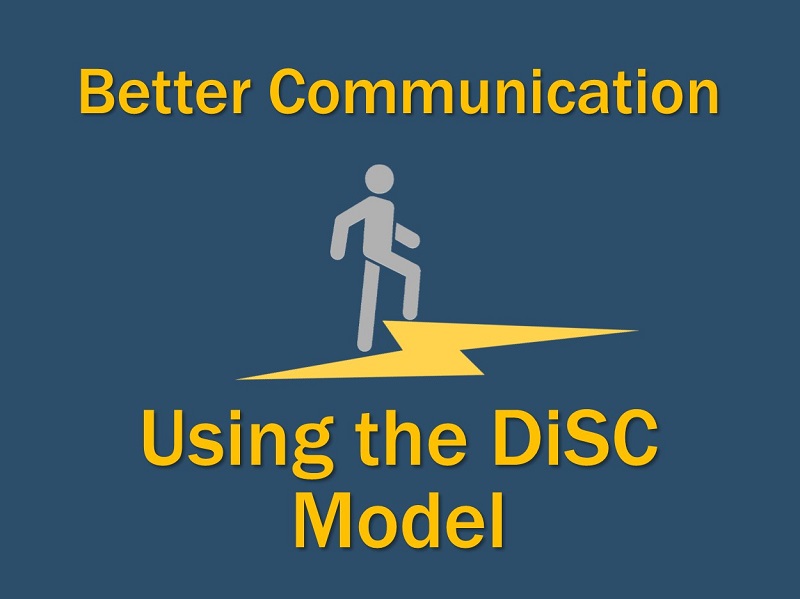In this Lightning Cast, you’ll find out how to improve your communication and collaboration by adapting your approach using the DiSC model.
A Lightning Cast is a shorter form episode modeled after lightning talks. You’ll get valuable content in 8 minutes or less.
It may sometimes seem like people act irrationally and are completely unpredictable. But in reality, these people are doing what’s rational to them. They may even think you’re the irrational one.
People think differently and these differences can lead to conflict, misunderstandings, and inhibit collaboration. If you learn about personally types, you’ll find that there are patterns of behavior that people tend to follow.
Understanding these patterns will help you to see that people aren’t crazy; they just see the world and interact with others in different but mostly predictable patterns of behavior.
The DiSC model is a tool to help you understand some of these differences so that you can adapt your approach to communicate more effectively. DiSC is based on the work of Harvard psychologist Dr. William Marston in who theorized that people tend to develop a self-concept based on one of four factors — Dominance, Inducement, Steadiness, or Compliance.
There are tests you can take to determine your DiSC type, but a quick way is to note if you are more outgoing and fast-paced or more reserved. Then, consider whether you are task oriented or people oriented.
Summary of DiSC Profiles
People who are more outgoing and task oriented fall into the D type (Dominance or Decisive). They often big picture thinkers focusing on results. If you’re outgoing and people oriented, you’re an I type (Influencing or Inspiring). They work through relationships and by persuading others.
Those who are more reserved and people oriented are S types (Supportive and Steady), focusing on cooperation and dependability. People who are reserved and task oriented are C types (Cautious and Conscientious), focusing on facts and data.
Why these DiSC profiles are important is because since you know someone’s primary type, you can change your communication style to fit their preferences.
It’s important to note that some people may be on the border between two types or exhibit behaviors from other types. Recognizing their default type and how they’re behaving in the current situation will inform your approach.
You can guess a person’s main DiSC type through simple observations about their behavioral tendencies, interactions with others, and preferred environments.
D Style – Dominance or Decisive
People with the “D” style place an emphasis action and achievement and tend to be fast-paced and task-focused. D types are motivated by winning, competition and success. They want to take action and get immediate results.
They value personal freedom and may be perceived as described as being forceful, driven, and impatient.
When communicating with the D style individuals, give them the bottom line, be brief, focus your discussion narrowly, avoid making generalizations, refrain from repeating yourself, and focus on solutions rather than problems.
Examples of D types include Arnold Schwarzenegger, Margaret Thatcher, and Robert De Niro.
I Style – Influencing or Inspiring
People with the “I” style place an emphasis on shaping the environment by influencing or persuading others.
A person with an I style is often described as convincing, trusting, and optimistic. They prioritize taking action and collaboration.
They’re motivated by social recognition, group activities, and relationships and they fear loss of influence and being ignored.
When communicating with the I style individual, share your experiences, allow them time to ask questions, focus on the positives, avoid too many details, and don’t interrupt them.
Examples of I style individuals include Bill Clinton, Oprah Winfrey, and Jim Carrey.
S Style – Supportive and Steady
People with the “S” style place an emphasis on cooperating with others to complete tasks.
A person with an S style is motivated by cooperation and sincere appreciation. They are often described as calm, patient, and consistent. Many are seen as less indecisive and fearful of change.
When communicating with the S style individuals, express your interest in them, be clear about expectations, and avoid being confrontational or overly aggressive.
Examples of S type individuals include Mahatma Gandhi, Michael J. Fox, and Mother Teresa.
C Style – Cautious and Conscientious
People with the “C” style focus on working conscientiously to ensure quality and accuracy.
A person with this style is motivated by opportunities to gain knowledge, showing their expertise, and quality work. They work to ensure accuracy and they challenge assumptions. They’re often described as cautious, accurate, and tactful and fear criticism and being wrong.
When communicating with the C style individual, focus on facts and details, minimize small talk, and be patient.
Examples of C types include Albert Einstein and Bill Gates
Listen to the full episode to understand how to apply the DiSC model to adapt your communication.
Thank you for listening to the program
To get more valuable content to enhance your skills and advance your career, you can subscribe on iTunes and other podcatchers.
Also, reviews on iTunes are highly appreciated! I read each review and it helps keep me motivated to continue to bring you valuable content each week.







